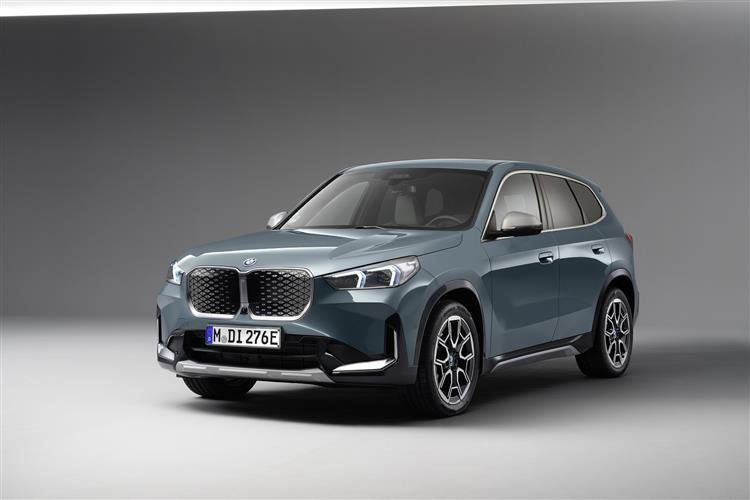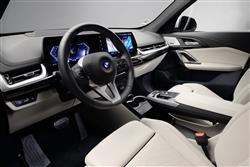THE ONE SHOW GOES ELECTRIC (some text hidden) --NONE--
By Jonathan Crouch
BMW's iX1 sets a high standard for small full-electric SUVs. Jonathan Crouch drives it.
Ten Second Reviewword count: 45
The BMW of small, relatively affordable EVs now looks like this, the iX1. Visually, it's little different from any other third generation X1, but the 64.7kWh powertrain offers very competitive driving range, rapid performance and remarkable traction. A pricey package, but one with considerable potential.
Backgroundword count: 131
It was crucial that BMW's third generation X1 crossover should also be available in full electric form. Most of this model's key rivals now offer that option, so the iX1 is extremely significant for the Munich maker and effectively acts as the new entry point for the company's growing range of EVs. It doesn't have bespoke EV architecture underneath, but then most current segment rivals don't yet have that either. The advantage of this from BMW's point of view is that an FAAR platform shared with combustion X1 variants allows the iX1 to be built on the same production line at Regensburg in Germany. So is this contender going to really worry direct class rivals like the Tesla Model Y, the Mercedes EQA and Volvo's XC40 Recharge Pure Electric? Let's see.
Driving Experienceword count: 263
There's a choice of two iX1 models. Things kick off with the base single motor front-driven 204hp iX1 eDrive20 variant, with 247Nm of torque and between 268 and 296 miles of range. Or there's the much more powerful dual motor AWD xDrive30 version, which offers 313hp, 494Nm of torque and 257-272 miles of range. Both variants use the same 64.7kWh (usable capacity) battery. We tried the iX1 xDrive30, which as mentioned is powered by one electric motor at the front axle and another at the rear, each combined with power electronics and transmission in a single, compact housing. It's quite a potent package this, the twin motor all wheel drive system giving the iX1 xDrive30e a rest to 62mph sprint time of just 5.7 seconds. Top speed is 112mph. BMW's promising more accomplished handling than class EV rivals can offer as well, thanks to clever wheel slip limitation technology borrowed from the larger iX. With this traction management setup, power can be automatically transferred between front and rear wheels to maximise stability and grip. If you're used EVs of this size scrabbling away for traction from rest under hard acceleration, that feature will be welcome. Expect refinement to be even more impressive than it usually is on an EV thanks to a sleek drag coefficient of 0.26Cd. Adaptive M suspension is standard, agility and comfort benefitting from mechanically controlled adjustable and frequency-selective dampers. Pressure peaks inside the dampers are smoothed out by additional valves active on the rebound side. The specially designed damper system also brings about a 15mm drop in ride height.
To see the full road test text contact us on 0330 0020 227
Pictures (high res disabled)

.jpg)
|
.jpg)
|
.jpg)
| |||
.jpg)
|

|
Statistics (subset of data only)
Min |
Max |
|
Price: |
£51,350.00 (At 2 Sep 2022) |
|
Max Speed (mph): |
112 |
|
0-62 mph (s): |
5.7 |
|
Electric WLTP-Rated Driving Range (miles): |
272 |
|
Length (mm): |
4500 |
|
Width (mm): |
1845 |
|
Height (mm): |
1642 |
|
Boot Capacity (l): |
490 |
|
Scoring (subset of scores)
Category: Hybrid, Plug-in, Electric & Hydrogen
| Performance | |
| Handling | |
| Comfort | |
| Space | |
| Styling, Build, Value, Equipment, Depreciation, Handling, Insurance and Total scores are available with our full data feed. | |



